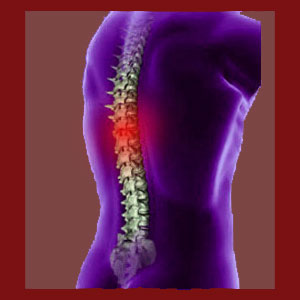
Facet joint middle back pain is the least common type of zygapophyseal symptomology. This is due to the fact that mid thoracic facet joint problems are rare to experience and even less often significantly symptomatic. The middle back is a region that is generally spared from marked degeneration and is also protected against injury. It is for this reason that middle back pain related to apopyseal pathologies is the least often reported location for facet syndrome.
However, for patients who do experience mid back facet joint-related pain, the effects of their suffering can be disabling. Often patients will demonstrate reduced physical functionality in the upper body, along with limited physical abilities to bend or lift. Worse still, it might be difficult to attain a positive diagnosis, since middle back pain is not focused upon by most caregivers, who tend to concentrate on the neck and lower back as primary symptomatic zones.
This essay examines the expression of middle back pain due to various facet joint problems. We will explore mechanical and neurological pain syndromes in the mid thoracic spine and provide guidance for patients who are currently suffering from these miserable issues.
Facet Joint Middle Back Pain Anatomy
The mid back is generally considered as the final 6 vertebral levels in the thoracic spine. The demarcation of the beginning of the middle back occurs at T7 and the region ends at the thoracolumbar juncture at the T12/L1 disc. The middle back is also reinforced by the ribs for added durability, much in the same manner as the upper back.
The middle back is made for structure and stability. It is not called upon to perform in the same flexible manner as the neck or lumbar spine, saving it from a large amount of wear and tear and subsequent degenerative effects. It is for this reason that disc pathologies are seldom seen in the mid thoracic levels and osteoarthritic activity is also kept to a minimum. The facet joints are therefore rarely affected by significant bone spurring, hypertrophy or inflammation.
When facet syndrome is diagnosed, it is virtually always found at or near T12/L1, as this level begins to experience more mobility and physical exertion that the other thoracic levels. The beginning levels of the mid back at T7 and T8, along with the lower areas of the upper back at T5 and T6, are statistically the least common areas of the spine for facet joint syndrome to occur.
Middle Back Pain Expressions
The most prevalent source of facet joint symptoms is osteophyte formation within the moving parts of the joint that lead to mechanical pain and dysfunction. When the middle back zygapophyseal joints are affected by bone spurring, the pain will usually be centralized on the spine and experienced directly in the affected tissues. The symptoms should not radiate across the back or affect large areas of the anatomy. The same holds true for compression of the tiny neurological structures within the facet joint. When either type of pain occurs, symptoms will almost always be directly related to mobilization of the affected joint structure.
Ligament problems causing facet tension or laxity can create variable symptoms that might spread in a linear pattern up or down the center spine. These also should not radiate outwards off the center of the spine. Tightness or instability might result, depending on the nature of the problem, but actual pain is not inherent to these concerns.
If a pinched nerve root occurs due to facet osteophytes closing off the posterior border of the neural foremen, then symptoms will be expressed in the areas of the body innervated by the compressed nerve. From T7 to T12, this means areas of the chest, abdomen and middle and lower back regions will suffer potential tingling, numbness and weakness, as well as possible pain, as a direct result of ongoing nerve interference.
Facet Joint Middle Back Pain Evaluation
Middle back facet joint syndrome is rarely seen and when it does occur, is usually the result of some injury or related spinal pathology, rather than a normal result of spinal aging. Many patients who are diagnosed with upper mid thoracic facet syndrome are also suffering from scoliosis or kyphosis, while some with lower mid thoracic facet joint concerns demonstrate severe lumbar hypolordosis or hyperlordosis. Traumatic injury can affect the thoracic spine at any level and might result in a cascade of atypical degenerative effects, including facet joint pathologies.
Patients who are diagnosed with middle thoracic facet syndrome should take special care to confirm the accuracy of this verdict. The occurrence of misdiagnosis is high, leading to terrible treatment outcomes. While it may be difficult to find a specialist in middle back facet pain, at least try to find an orthopedist who has enough experience to not only differentiate pathological facet arthritis from normal degrees of facet deterioration, but also can provide effective treatment that stands a good hope of resolving the pain without causing undo risk to the greater spinal anatomy.
Facet Joint Pain > Facet Joint Symptoms > Facet Joint Middle Back Pain






